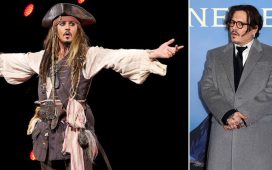The possessive in the title of Zack Snyder’s Justice League says it all. This rerelease of 2017’s disappointing Justice League is not merely a “Snyder cut,” as it’s been called by rabid fans and suspicious nonbelievers, who doubted we’d ever see such a thing. The difference between the nearly four-hour cut that premiered on HBO Max and the beleaguered theatrical version (completed by the similarly beleaguered Joss Whedon) — is not merely cosmetic. Nor is it the kind of restoration and reordering of missing scenes usually implied by the term “director’s cut” — a subject on which Snyder, whose Watchmen and Batman v. Superman: Dawn of Justice each have extended cuts, is also an expert. This is a director unmistakably reclaiming his territory.
It should be remembered that it was Warner Bros. — the same company now shelling out $70 million for these upgrades — whose uncertainty over the future of the DC Extended Universe after the failure of Batman v. Superman kick-started the conflicts that landed us here in the first place. Before a personal tragedy in Snyder’s life made his leaving the project final, the studio’s uncertainty over his vision made hiring Whedon a viable cleanup man.
Related: Watch Zack Snyder’s Justice League here on HBO Max
That hiring should have told us almost everything. Whedon was, after all, the director of the first Avengers movie — and Snyder’s vision of the superhero template is as heavy, grandiose, and self-contained as Whedon’s Avengers template was pliable and comparatively light on its feet, an extensive and canny exercise in franchise management. The Avengers films are checkpoints on the way to the more specific, more grounded and (usually) more satisfying offshoots tailored to the specific heroes. Whereas Snyder’s films have often made it harder to imagine where one might go from here. Where do you go once, as in Batman v. Superman, you’ve killed off Superman? Wonder Woman is mighty lucky not to have gotten her start in a Snyder movie.
But that isn’t to say that Wonder Woman — or for that matter Superman —aren’t given their due in this new version. That is perhaps the supreme irony of the Snyder cut. More than the 2017 Justice League — more than even any of the massive Avengers movies — Zack Snyder’s Justice League makes a strong case for most everyone on its team of titular heroes. This is true most of all for Ezra Miller’s Flash, Jason Mamoa’s Aquaman, and — by a significant margin — Ray Fisher’s Cyborg, who in Snyder’s new cut of the movie is practically the emotional core of the story, whereas in Whedon’s rendition, he was something of a non-character: a man whose traumatic past (fully fleshed out in this longer version) gets summarized in a few terse scenes, whose powers are elaborated upon in some of the movie’s most riveting and intricate scenes.
Justice League 2.0 renders Cyborg into something closer to the Dr. Manhattan of Watchmen: a knows-it-all, seen-it-all, indescribably powerful being whose superpowers are the result of a catastrophic mistake, and whose lens on the world is thus somewhat grimmer for it. More room for Cyborg results in a larger role for Joe Morton, as his father, the head of S.T.A.R. Labs — another context that gets adequate elaboration. This, more than almost any other addition, accounts for the enlarged scope of the movie. It also opens the door to more questions about Whedon’s cut of the film. How does what may have been a central storyline — not least the storyline involving the film’s Black character — get reduced to ashes?
To say that much of this, much of the residue of the larger project, was already apparent from the Whedon version is to drastically understate the case. But, then: Snyder has four hours to play with. He does not use every minute of that runtime wisely. He repeats past errors; the conclusory battle scenes, as big and brash as they are, feel just as compulsory and nonsensically destructive as they have in his previous films. But even this makes more sense than it used to. It’s of a piece with Snyder’s boyish amazement, his discernible awe, at the totality of these superheroes and what they’re capable of — a quality that has tended to set his films apart from the more grounded Marvel output, in which big, totalizing things tend to happen, but the more important threads feel interpersonal. Black Panther wouldn’t be nearly as effective without the ideological clashes at its center. Nor would the Iron Man trilogy be as charismatic were it any less a vehicle for Robert Downey Jr. to Robert Downey us half to death. Same to the franchise’s youthful Spider-Man; same to its hijinks-heavy Ant-Man films.
There’s little to worship in these films, beyond the pitch-perfectness of Chris Evans playing a guy called Captain America. Whereas Snyder is all worship, all the time. And the new Justice League arrives with a stark, clarifying sense of vindication, no matter how good or bad it is (and certainly — let’s just put it out there — it offers a bit of both) for putting this element, so noticeably missing from the 2017 release, back into the mix. That titular possessive really is doing a lot of work. The basics of the plot are, by and large, the same. We still have the Mother Boxes. We still have Steppenwolf (though even he gets fleshed out a bit more, with more of his own scenes and greater sense of where he fits in the rankings of Bad Guys Trying to Destroy the World, which is apparently not very high.) It’s still a film whose opening stretch is devoted to the meet-and-greet mechanics it takes to get the gang together. And it all still hinges on bringing Superman back to life.
Only here, there’s a bit more weight behind the idea. The movie opens with a flashback to his death, and Snyder — for all his sense of bloated meaning and exaggerated feeling — rightly gives us time to stop and consider the ramifications of that fact. It’s the death of Clark Kent that awakens the world-destroying Mother Boxes to begin with; they’re attracted to devastation. So it only makes sense to literalize that loss as Snyder now does. We see the way that Superman’s dying shout echoes through land and sea, stirs that evil awake. We see the ways that otherwise historically warring tribes — the Atlanteans, the Amazons, the race of men — all become attuned to that cry. It’s the film’s opening gesture, and it has the summarizing effect of saying: This matters. Compare that to the fleet-footed first act of the 2017 film, in which much of our sense of these stakes is mentioned but not literalized onscreen, and you’ll know, within minutes, what sets Snyder’s film apart.
This doesn’t make the movie great. But there’s something to be said for a movie that feels more genuine. Rather than being a studio-bred Frankenstein mash-up of Snyder, WB, and Whedon’s competing intentions, the Snyder Cut is instead a Frankenstein of most every element of the director’s style that makes his films his. Scenes of the embattled Amazons taking on the cosmically silly Steppenwolf have the bronzed, slow-mo, sculptural intensity of Snyder’s gladiatorial epic 300. The humor so falsely injected into the grimly serious world of the movie by Whedon has been pared back. The Flash, for example, is far less of a jitterbug; when Batman first sneaks into his hangout, we no longer see K-pop playing on Barry Allen’s TV monitors. He’s no longer reduced to being an asocial nerd. If anyone is reduced, it’s Bruce Wayne — to his bank account.
Fans were immediately suspicious of Whedon’s Justice League because it’s sensibility was so conspicuously severed from Snyder’s vision. No, the new Justice League is not exactly a slam dunk. It is too long. Its climax is more overbearing than thrilling. And a coda drops us right into the territory that, one senses, Warner was trying to avoid. (Remember that alien dream Batman had in Batman v. Superman? Well, get ready.) Yes, Snyder overplays his hand here. But it’s most definitely the more compelling hand.














